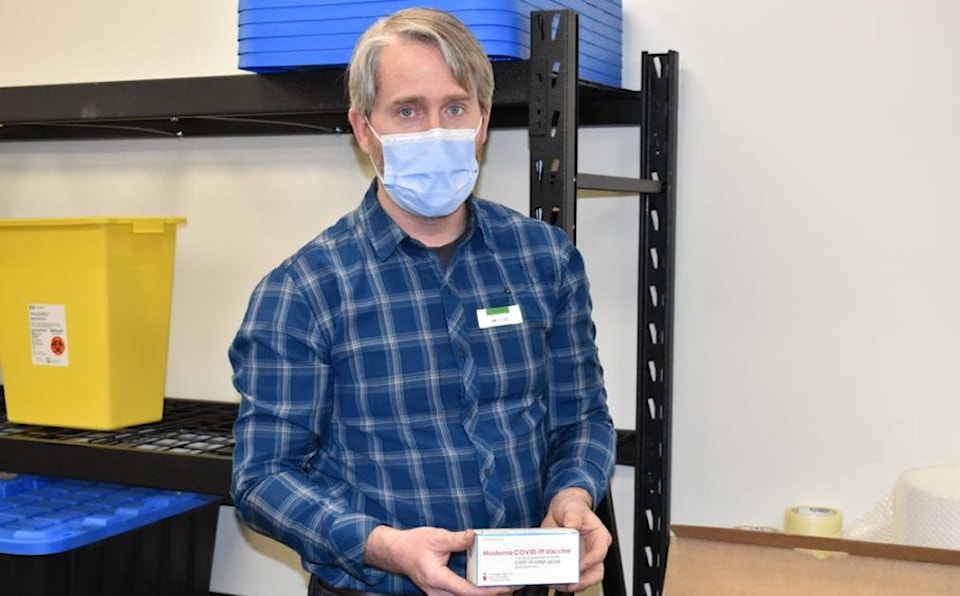Health care workers handling Covid-19 vaccine doses are expected to treat them as more fragile than an egg.
The movements of the doses of the Moderna vaccine now flowing into the NWT are to be minimized, and each one has to be logged, according to Sean Marshall, lead logistician with the Northwest Territories Health and Social Services Authority (NTHSSA).
“Something more delicate than an egg is what we're looking for people to respect that as,” he said at a demonstration in Yellowknife Friday.
Marshall showed reporters some of the hardware used to transport the vaccines in a government office space inside the Centre Square Mall, part of a logistics presentation that came just over one week after the Covid-19 vaccination campaign began in the NWT.
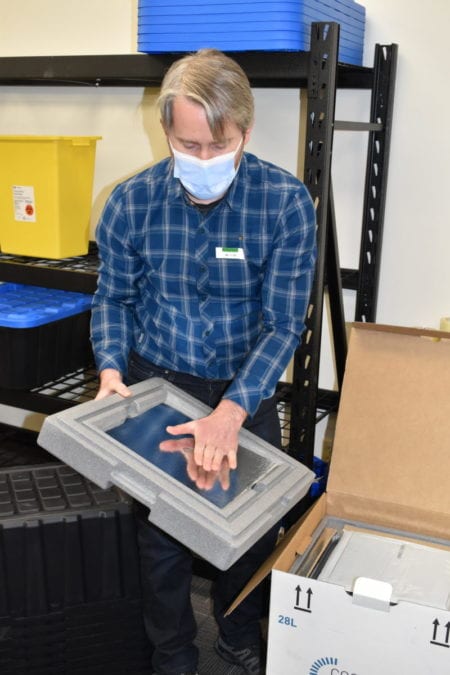
“We need to manage movement when they're in a cold state," he said. "We can move it for a cumulative (total) of 12 hours."
They're so easy to damage due to their liquid emulsion content and because they have to be kept cold. Just moving a vial across a room is an act worthy of being recorded.
The vaccines last 30 days in a refrigerator. They are brought to room temperature to be administered, and can't be moved after that. They also can't be refrozen.
They only last 12 hours at room temperature, and only six hours after the vial has been punctured.
“Even shaking it can destabilize the vaccine,” said Scott Robertson, executive co-lead for Covid-19 response. “It takes a lot of planning to make sure that we move the vaccine to the right place, and get all the people in the right area to immunize them so we don't waste any vaccine.”
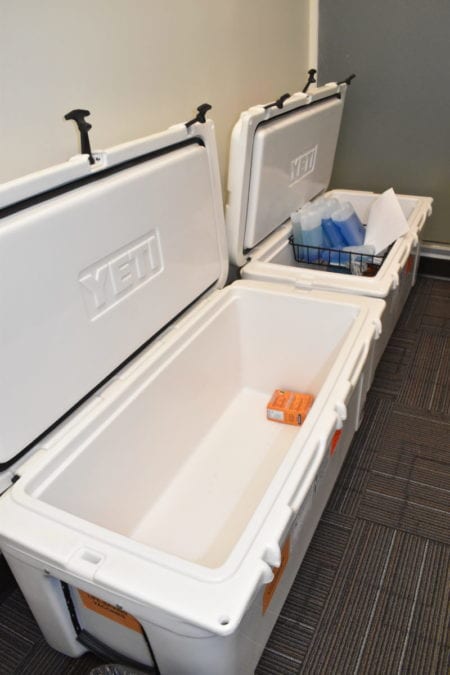
If something goes wrong, experts at Moderna are contacted. They can provide guidance on whether the vaccine can still be used or if it has to be discarded.
Health Minister Julie Green, who was also at the logistics tour said that there's a contingency of five per cent of doses that might not be delivered because of breakage of what's referred to as the "cold chain" or other problems.
“There is an acknowledgement that despite the most careful efforts by the team here, it is possible that some doses will will lapse, and that's been factored in. We obviously want that number to be as small as possible.”
Moving the vaccines
Like all vaccine doses, the first shipment received by NWT officials Dec. 28 were transported in 13-kilogram freezer boxes that have heavy insulated panels. Each box contains 10 vials holding 10 doses.
Extra syringes and needles were acquired from Canada's national stockpile because there is a global shortage at the moment, Robertson said.
Each vaccine dose is paired with syringes and needles when it is sent out.
When transported to a site like AVENS Manor in Yellowknife, the doses are typically carried in commercial Yeti coolers packed with frozen thermal mass, though the one deployed to Avens was smaller, Marshall said.
The residents and support staff at Avens Manor and the Jimmy Erasmus Seniors Home in Behchoko were the first people in the NWT to receive vaccines on Dec. 31.
Vaccination team preparations
When the vaccination teams go to the communities, they take their personal protective equipment and food and in some cases take their own sleeping bags, though efforts are made to use local accommodations.
Teams are made up of at least four people, two logisticians and two nurses. All nurses are trained in vaccination delivery and logisticians receive training in cold chain, cultural safety and infection control.
It's a more complex process than the vaccinations that were carried out during the H1N1 pandemic in 2009, Robertson explained. He said those vaccines were more readily available, that only one dose per person was needed and that there were enough doses for the entire NWT population immediately and that the vaccines could be restored in a cooler, unlike the Covid-19 vaccines.
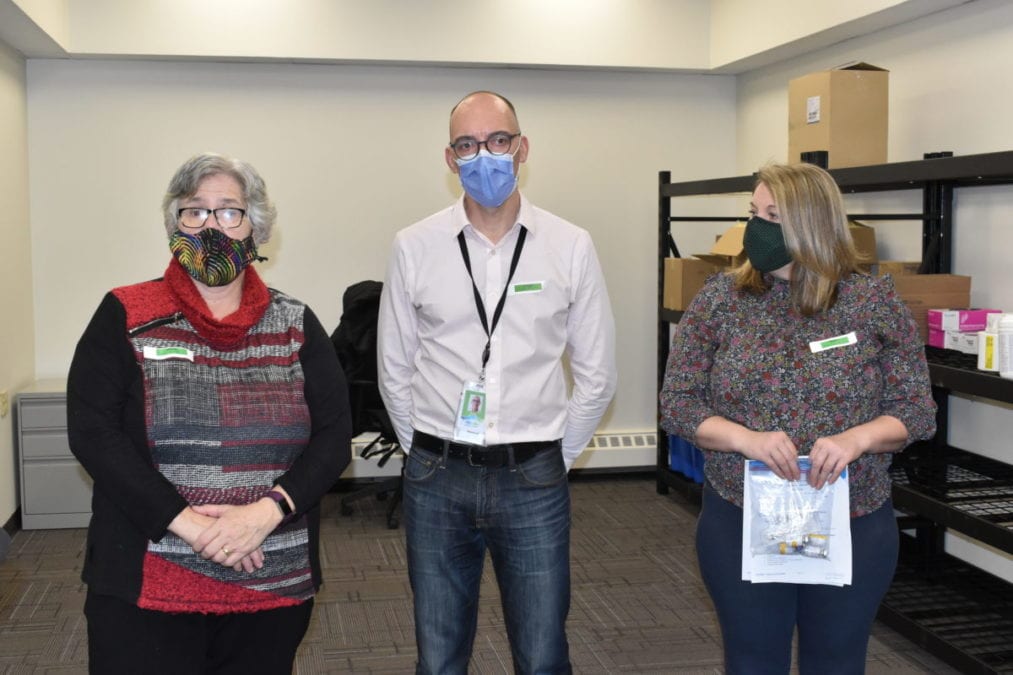
“Five teams of 17 staff travelled to the communities to administer the (2009) vaccine,” Robertson said.
Although the current vaccination campaign aims to minimize waste and use up all of the doses, Green added that in at least one case when there was an extra dose, the team managed to find an individual in a priority group.
A 95-year-old woman was called in to be vaccinated.
"I really applaud the creativity of the teams to make sure that everybody who is eligible is getting a vaccine, and also that they are nimble enough to make a last minute adjustment like that," Green said.
Tracking coordination of teams
The movement of vaccination teams is coordinated through a staff led by Ingo Bauer, a senior network analyst on transfer assignment to the NTHSSA.
“We coordinate the movement of staff, material, airplanes, vaccines, hotel accommodation, ground transportation – whatever we need done to get a team into a community, get it safely there, have a site where we can actually vaccinate and then bring them back here,” Bauer said.
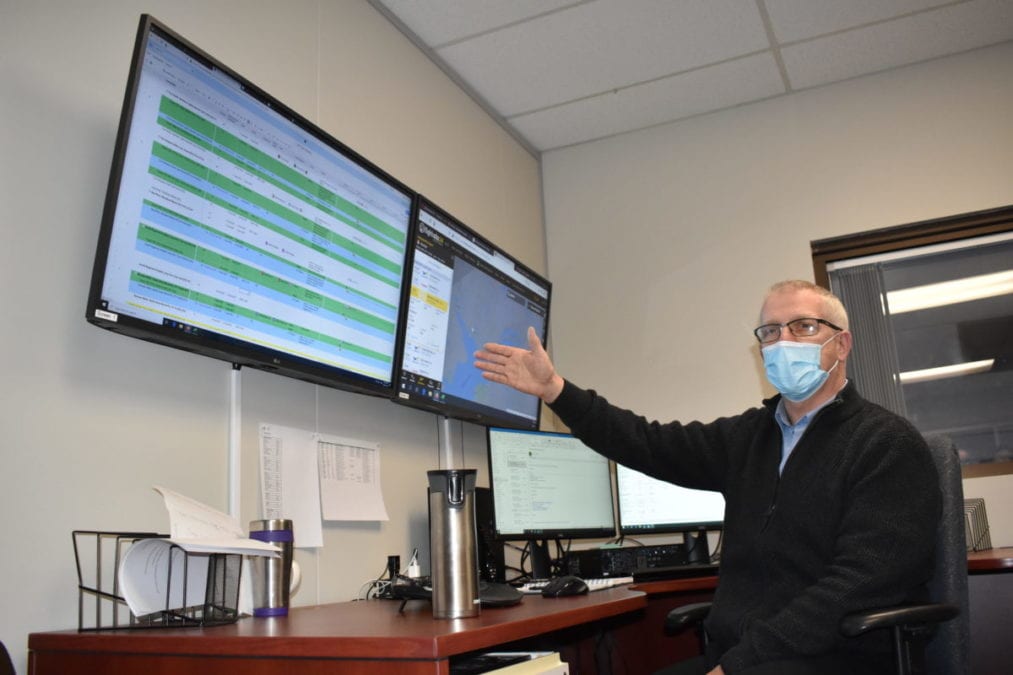
His staff of three are available to each other 24 hours a day by phone and email.
On his computer screens he monitors data such as flights across the territory and weather changes so that potential delays can be managed. They also track the time a vaccine was given and when the second dose is due in 28 days.
Their set up is prepared for potential internet problems so they can “fail back” on a lack of access by relying on printed deployment packages that contain the contact information for people in the community destinations.
Air Tindi, Canadian North and Northwestern Air Lease were used to transport teams to communities on Thursday, Bauer said, but any airline would be used if they can meet the teams' needs. Both scheduled and chartered flights are used to transport teams and vaccines.
